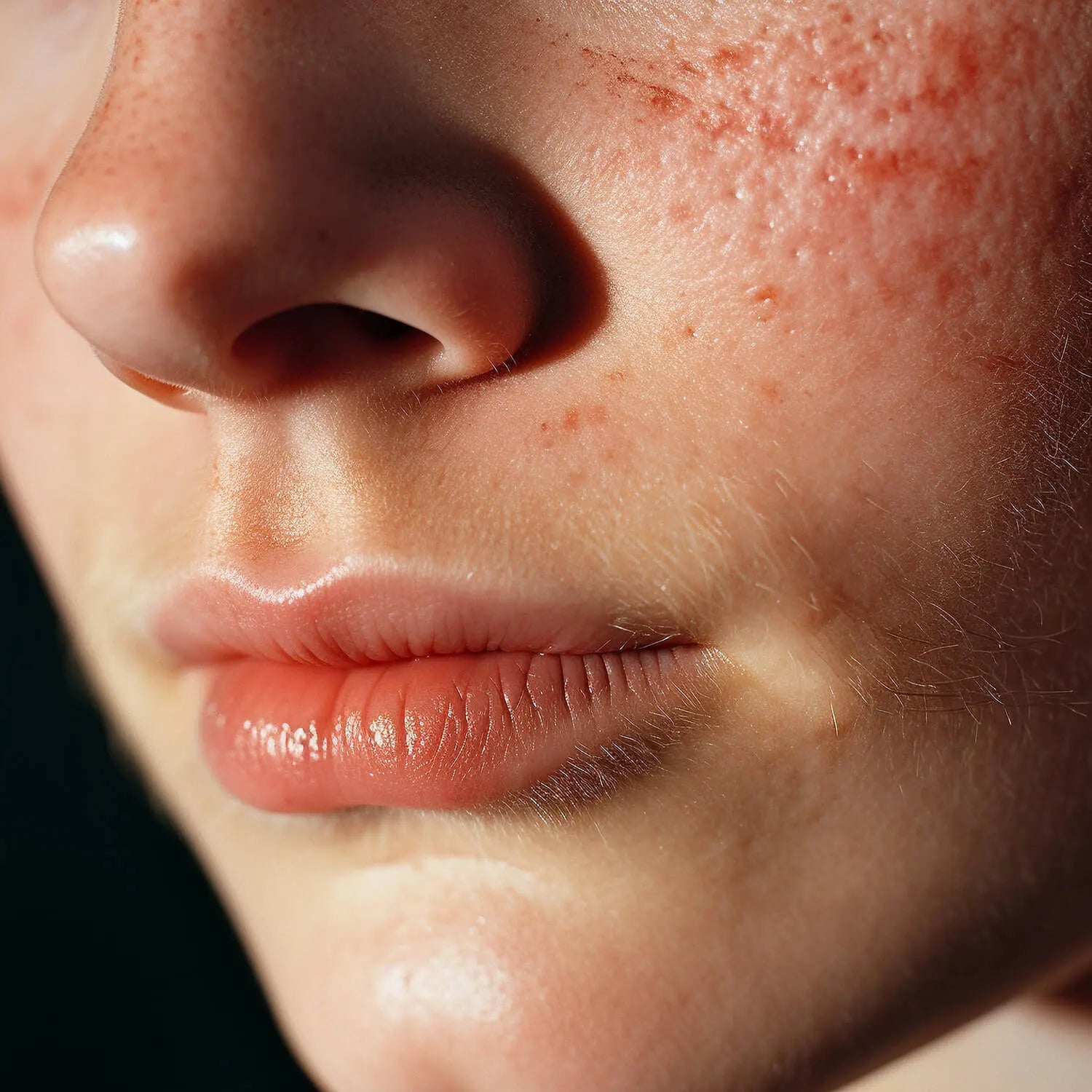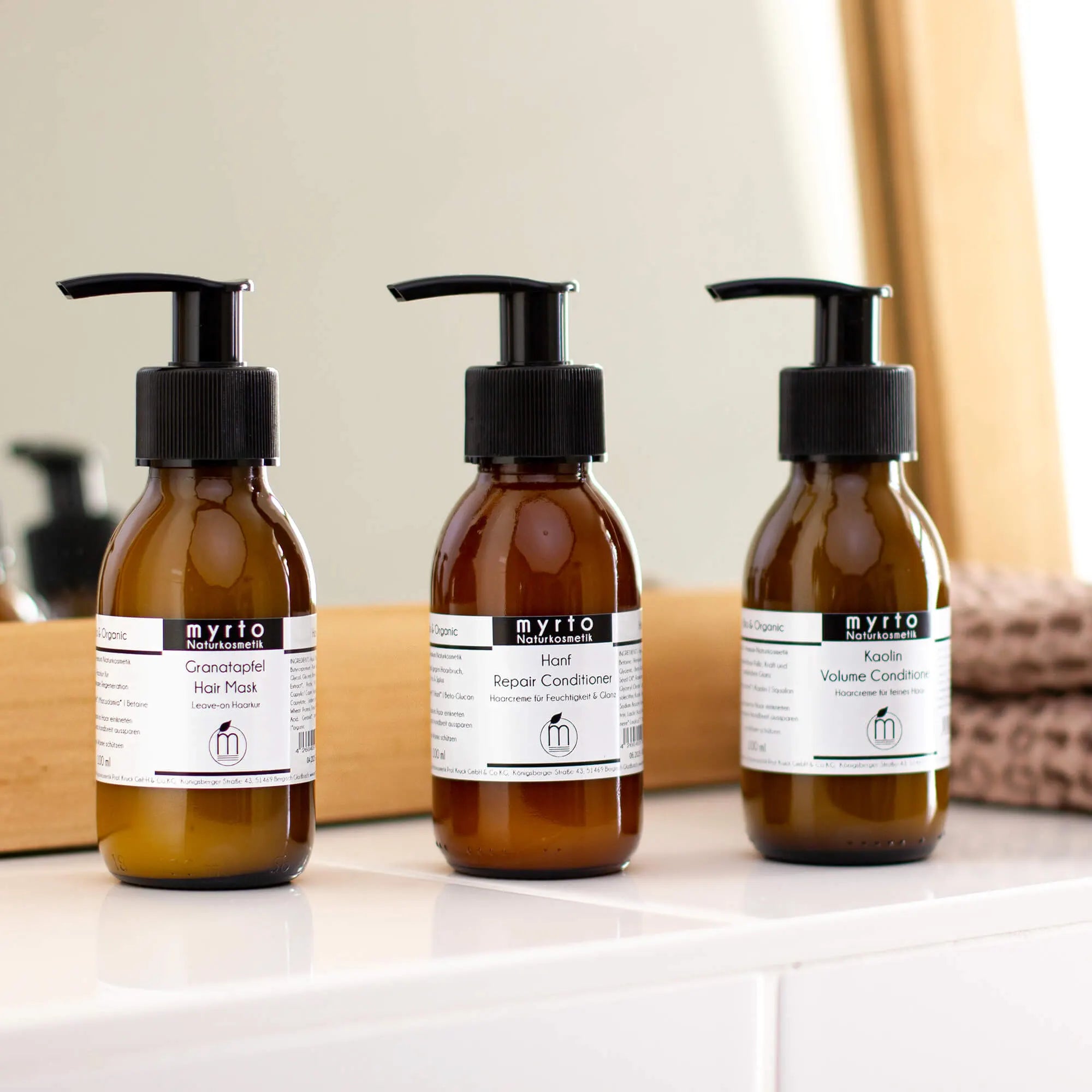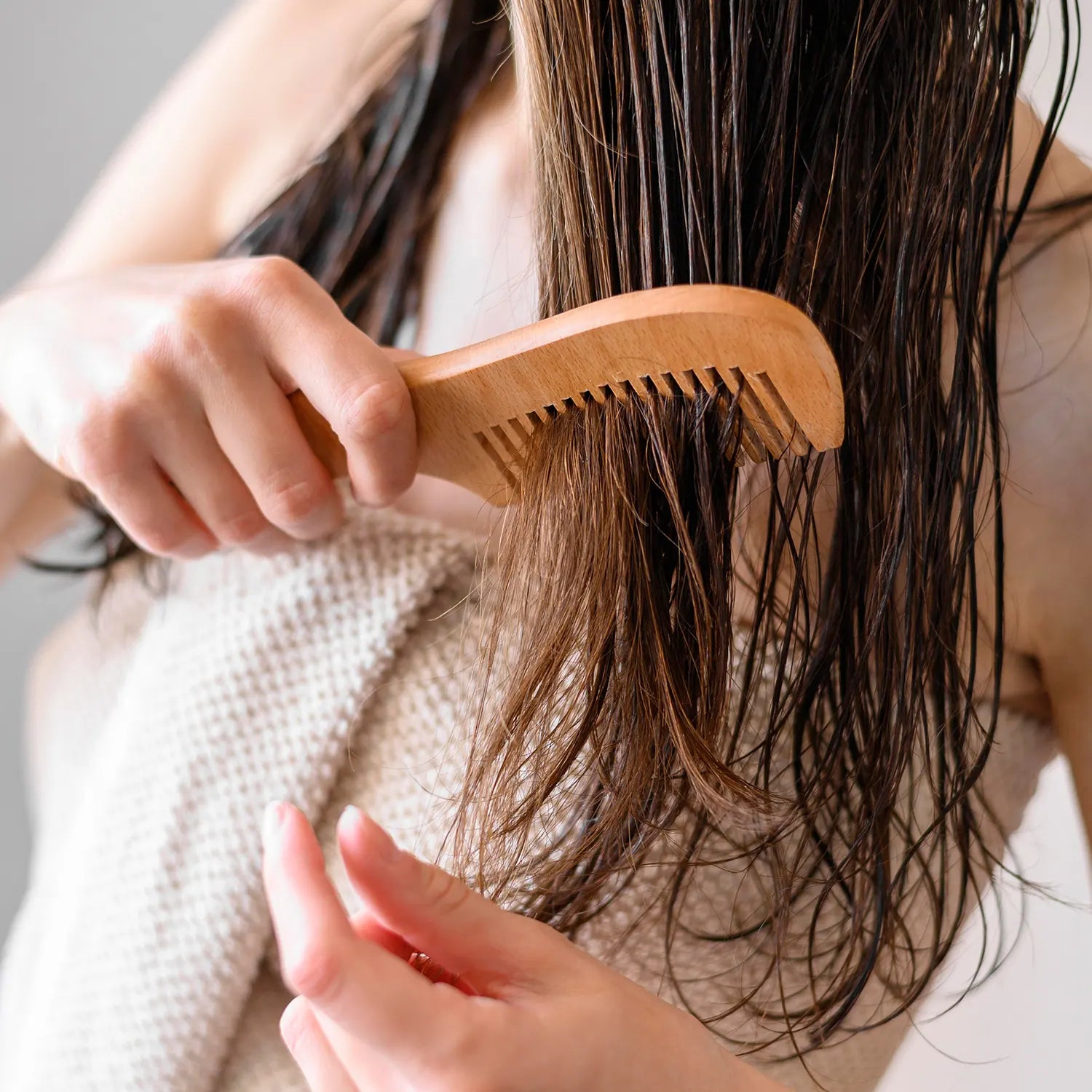
Treating and preventing acne naturally
Acne is one of the most common skin diseases, affecting men and women equally. Almost every young person suffers from acne to a greater or lesser extent during the hormonal changes of puberty. Acne often recurs when the person is over 30 years old.
Diagnosis - Recognizing Acne
Acne can have different forms. Typical acne features are oily skin with increased sebum production and chronic skin changes such as blackheads (comedones), pimples, papules, pustules, cysts and nodules as sublayers. Open blackheads are called whiteheads when they appear as small white dots. Closed blackheads are called blackheads when they appear as small black dots. Papules are small, raised pimples that can be inflamed and red. Pustules are similar to papules, but are filled with pus and often have a whitish or yellowish head. They can be red and inflamed. Sublayers are large, painful, inflamed pimples that lie deep under the surface of the skin. They can take weeks or months to reach the surface.
The severity of acne ranges from mild forms with only comedones and pimples to more severe forms with papules, pustules, nodules and cysts. After healing, pimple marks or acne scars with hyperpigmentation may remain. The pores of acne-prone skin are usually enlarged. The face is most affected where there are more sebaceous glands. This is the T-zone with the forehead, nose and chin. On the body, acne mainly affects the chest, neck and back.
Differentiation from Rosacea
In contrast to acne, rosacea does not increase the skin's sebum production. Rosacea therefore does not cause blackheads (comedones). While acne often begins with puberty, rosacea mainly occurs between the ages of 30 and 50.
Causes - How does acne occur?
-
Excessive sebum production
Acne occurs primarily in oily skin when the pores produce excessive amounts of sebum. Excess sebum can clog the pores, causing sebum plugs to form. In combination with dead skin cells and under the influence of inflammatory acne bacteria such as Propionibacterium acnes, blackheads and pus-filled pimples, papules or pustules develop. -
Hormonal changes
Acne is usually caused by hormones. In particular, an excess of male sex hormones (androgens) can cause acne. Androgens such as testosterone are not only produced in the male body, but also to a small extent in the female body. Hormonal fluctuations occur mainly during puberty, menstruation, pregnancy or menopause. -
Genetic predisposition
If parents, grandparents or close family members have already been affected by acne, there is a genetically increased risk of developing acne. -
environmental factors
Being exposed to high levels of air pollution or harsh chemicals can irritate your skin and contribute to the development of acne. -
poor diet
A diet rich in sugary foods, meat and dairy products worsens acne. Sugar stimulates insulin production. The hormone insulin in turn promotes sebum production. Sugar and meat promote silent inflammation in the body and weaken the immune system. High milk consumption can cause hormonal imbalance in the body due to the growth hormones it contains.
There are also some trigger factors that can worsen acne:
- Long-term psychological stress can unbalance the hormonal system or weaken the immune system and limit the body's ability to detoxify via the intestines. Foreign pollutants, bacteria or viruses can then be fought off less effectively.
- Side effects of medication, cortisone, psychotropic drugs or anabolic steroids can change hormone levels. The healthy bacterial flora on the skin (microbiome) can also be destroyed by medication and its side effects.
- Nicotine constricts blood vessels, impairs blood circulation and wound healing of the skin.
- Regular alcohol consumption dehydrates the skin, enlarges pores and promotes sebum production, which can worsen acne.
forms of acne
There are different forms of acne:
-
puberty acne (acne vulgaris)
This most common form of acne typically occurs during puberty and then heals spontaneously. It mainly affects the areas with many sebaceous glands on the face, but often also the neck, chest and back, where inflammatory pimples, comedones and pustules appear. -
Mallorca acne
Mallorca acne is caused by synthetic fats and emulsifiers in sunscreens. These substances, in combination with sunlight, trigger inflammation of the sebaceous glands. This manifests itself as an itchy rash with red spots. The face, chest and upper body are particularly affected. -
newborn acne
The cause of these harmless spots is the completely normal hormonal changes after birth, whereby the breakdown of the mother's pregnancy hormones in the baby also contributes to newborn acne. The best therapy for a rapid reduction in newborn acne is breastfeeding with breast milk, which itself also has an anti-inflammatory effect. -
fungal acne
This acne disease of the skin, also called Malassezia folliculitis or fungal acne, is caused by yeasts such as Malassezia furfur, which are part of the normal skin flora. When the skin's sebum production increases during puberty, the colonization of the skin with Malassezia yeasts, which feed on skin sebum, also increases. -
Hormonal acne
The so-called hormone pimples usually appear 7-10 days before the period and during menstruation, when the skin produces more sebum and the pores can become clogged more easily. After the period, the skin condition improves again in cases of hormonal acne. Important to know: When using hormonal contraception with the contraceptive pill, the period is not a "normal menstruation" but a withdrawal bleeding caused by the hormones it contains. The hormones prevent ovulation and artificially ensure a largely stable hormone level. This means that hormonal acne occurs less frequently. -
late-onset acne (Acne Tarda)
This form of acne, which is also caused by hormones, is also known as adult acne. It often occurs after the last menstruation, with the onset of menopause, but also after stopping the contraceptive pill. You can find more information about this here.
Dermatological treatment for acne
In cases of severe acne, it is recommended to consult an experienced dermatologist. This is particularly advisable for a reliable diagnosis, but current conventional acne treatments are often associated with undesirable side effects.
Dermatological and conventional medical acne treatment is carried out externally, initially usually with azelaic acid, later with adapalene, tazarotene or retinoids such as tretinoin, whereby side effects such as dry skin, redness, swelling, flaking or itching are frequently observed.
Internally, antibiotics, hormonal contraceptives based on anti-androgens or isotretinoin (vitamin A acid) are mainly prescribed, which has particularly serious side effects. Acne treatment with an antibiotic must be strictly limited in time to avoid drug resistance.
Dermatological therapies for acne scars include chemical peeling, laser treatments, UV irradiation, microdermabrasion, cortisone injections or collagen injections.
Hygiene for Acne and Pimples
In most cases, you can treat acne yourself. You should take a holistic approach: with the right facial care, a healthy lifestyle with a diet rich in vital nutrients, enough sleep and consistent reduction of unnecessary stress factors. The right skin care, tailored to skin prone to blemishes and acne, ensures an even, clearer complexion. Follow these tips:
- Never squeeze blackheads and pimples yourself. This can cause new bacterial infections and leave permanent scars or marks.
- If possible, avoid touching your face with your fingers to avoid transferring additional bacteria to your skin.
- Wash your pillowcases and towels frequently to minimize bacterial growth.
Facial Care - Routine for Acne
Cleansing Cream
Gentle facial cleansing in the morning and evening is essential to remove dirt, make-up and excess sebum. The surfactant-free grape seed cleansing cream with clay cleanses extremely gently and provides a mattifying effect on oily skin. The cleansing gel with detergent amino acids is particularly recommended for deep pore cleansing on oily skin and for thorough removal of make-up, also in combination with the Deep Cleansing Oil.
Magnolia toner
The Magnolia Toner with organic licorice root extract helps to reduce the signs of acne scars and prevent new ones from forming. It stabilizes the skin's neutral pH value and helps to refine pores.
Anti-Pollution Facial Serum
The Anti-Pollution Facial Serum M with willow bark extract, grape seed oil and hyaluronic acid dissolves dead skin cells, strengthens the skin barrier and stimulates the skin's natural regeneration.
Copaiba Blemish Serum
The Copaiba Blemish Serum helps to combat pimples and acne quickly and intensively. The targeted treatment for blemishes supports the healing process, deeply hydrates the skin with hyaluronic acid and counteracts pimple marks.
organic grape seed day cream
The emulsifier-free organic grape seed day cream is an anti-comedogenic moisturizer that rebuilds the weakened skin barrier, counteracts inflammation and sustainably improves the skin's own immune protection.
Balancing Face Oil
The Balancing Face Oil contains a combination of selected anti-comedogenic and healing oils that work together to combat acne, oily skin and large pores. The Balancing Face Oil reduces excessive sebum production, moisturizes and has a long-lasting anti-inflammatory effect. This balancing face oil is not a miracle cure with immediate effects, but with regular use the skin's appearance noticeably and visibly improves.
Which natural cosmetic ingredients are particularly effective against acne?
The following active ingredients have proven to be particularly effective in treating acne, visibly and sustainably improving the skin's appearance:
-
Anti-comedogenic plant oils
Grape seed oil, argan oil, jojoba oil, shea butter, tamanu oil and black cumin oil counteract clogged pores and prevent new pimples. -
willow bark extract
contains plant-based salicylic acid, which has been proven to be significantly more effective than synthetic salicylic acid. Willow bark has an anti-inflammatory effect, dissolves dead skin and stimulates the skin's natural regeneration. -
Copaiba balsam
Ideal as a spot treatment for acne, it is considered the strongest natural antibiotic against microbial skin diseases. -
Bakuchiol
dissolves dead skin, stimulates cell renewal, and allows pimple marks and acne scars to heal faster. -
vitamin C
inhibits inflammation, fades acne scars, stimulates collagen production. -
niacinamide
Also known as vitamin B3, minimizes enlarged pores, evens out an uneven complexion, strengthens the surface structure of the skin. -
lactic acid
Removes dead skin with a gentle peeling effect, refines pores, inhibits the growth of microbial germs. - Beta-glucan: has an anti-inflammatory effect, strengthens the skin barrier.
What you should avoid
You shouldn't be too impatient when changing your skincare routine, as the improvement in your skin condition can take several weeks or even months. Your skincare products should NOT contain the following ingredients:
-
Comedogenic ingredients
Cosmetic ingredients made from mineral oil such as paraffins, silicones, Vaseline (petrolatum), PEG-based emulsifiers and synthetic surfactants made from petroleum raw materials such as SLS (Sodium Lauryl Sulfate), SLeS (Sodium Laureth Sulfate) or even Sodium Coco Sulfate, which is even certified for natural cosmetics, are considered to be particularly comedogenic. You can find more information about comedogenic ingredients here. -
alcohol
Avoid alcohol in your skin care. Alcohol promotes dry skin, damages the skin barrier and reduces the skin's natural ability to regenerate. -
fragrances
Fragrances can cause skin irritation in anyone with sensitive skin. We therefore advise against using tea tree oil in facial care products for acne. -
preservatives
Classic preservatives such as parabens, potassium sorbate or sodium benzoate can cause redness, itching, dry, flaky skin and even allergies. -
emulsifiers
Emulsifiers weaken the skin's protective barrier. There is a connection between acne and a disrupted skin barrier. Therefore, prefer emulsifier-free care products with skin-identical ingredients that strengthen your skin barrier. -
alkaline skin care
Cosmetics with a basic pH value greater than 7 destroy the skin's protective acid mantle. With basic skin care, bacteria and other microbial germs can easily penetrate the skin, causing pimples and acne. In combination with increased sebum production and keratinization, basic skin care creates an ideal breeding ground for acne and pimple-causing bacteria. Therefore, when choosing your skin care products, make sure they have a slightly acidic, skin-neutral pH value (approx. 5.0 - 5.5).
Conclusion
Avoid comedogenic ingredients in your skin care, which cause increased blemishes, pimples, blackheads and inflammation. Choose products without unnecessary additives such as alcohol, emulsifiers, preservatives and fragrances. Look for ingredients that have been proven to be effective so that your acne-prone skin gets exactly the effective care it needs to heal.
Reduce your consumption of sugary foods and dairy products, which can promote sebum production and inflammation. Instead, eat a balanced, as natural as possible diet with lots of fruit, vegetables and whole grain products. Avoid industrially manufactured ready-made products. Cooking oils with polyunsaturated omega-3 fatty acids such as hemp oil, algae oil or linseed oil are particularly recommended. A reduced frequency of meals with a maximum of 2 - 3 meal times per day can also significantly improve the appearance of the skin.
Your mental well-being plays an important role in the treatment of acne. The skin is rightly referred to as the "mirror of the soul". Therefore, reduce regular stress factors in your daily routine and learn to deal with them more precisely - stress hormones can make your acne worse. Regular exercise and relaxation techniques such as yoga, meditation and regular movement are helpful in reducing stress hormones. Unresolved psychological problems, depression, suppressed anger or fears can cause an acute acne flare-up. A worsened skin condition can in turn increase emotional stress. Are there relationships that stress you out? Only if you feel physically and mentally well can the treatment of acne be successful in the long term. Try to see acne not just as a problem, but also as a holistic opportunity to change annoying things and habits in your life. This way you can bring your skin back into balance so that annoying pimples are finally a thing of the past.









